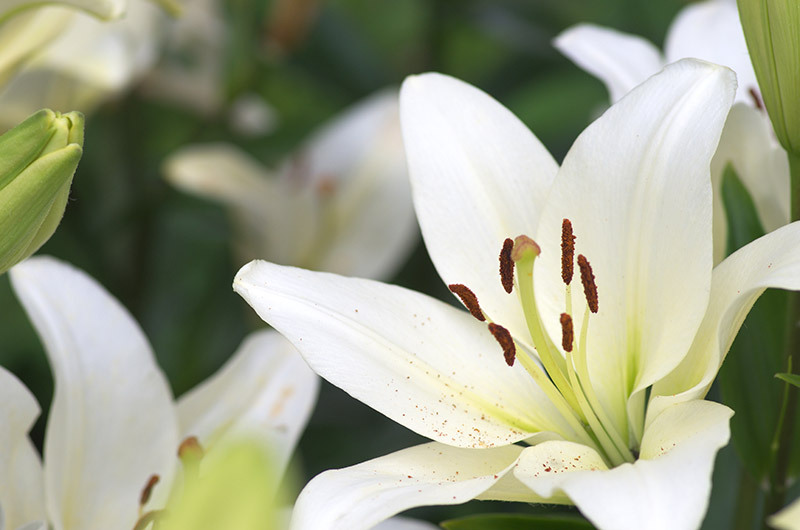How Did Red Roses Earn Their Place in Valentine's Day Celebrations?
Red roses and Valentine's Day are a timeless match. Each year, millions of bouquets are lovingly exchanged between sweethearts, friends, and family. But have you ever wondered why red roses became the ultimate symbol of love and romance on this special day? In this comprehensive article, we'll uncover the fascinating journey of the red rose - from its ancient origins to its central role in modern Valentine's Day traditions - and explore the deeper meanings, symbolism, and enduring popularity that have made this bloom an icon of heartfelt affection.
The Historical Roots of the Red Rose
The Ancient Symbolism of Roses
Long before Valentine's Day became synonymous with hearts, chocolates, and gift cards, the red rose had already blossomed into a powerful symbol. Its origins stretch back to ancient civilizations, where flowers played an essential role in expressing human emotion and marking important social rituals.
- Greek and Roman Mythology: The red rose was intimately linked to Aphrodite (Greek) and Venus (Roman), the goddesses of love and beauty. Legend tells that the first red rose sprang from Aphrodite's tears and her lover Adonis' blood, tying the flower forever to the themes of passionate love and loss.
- Early Literature and Art: In classical poetry and art, roses often adorned the images of gods and lovers, evolving into a visual language of longing, attraction, and sensuality.
Medieval to Renaissance Influences
During the Middle Ages and Renaissance, roses adopted even richer layers of meaning:
- Romantic Chivalry: In the age of courtly love, knights would present red roses to their ladies as a token of secret admiration, solidifying the flower's romantic reputation.
- Symbolic Literature: Authors such as Dante and Shakespeare referenced red roses as metaphors for fiery passion and true love.

The Emergence of Valentine's Day Traditions
Who Was Saint Valentine?
To understand how red roses earned their association with Valentine's Day, it's essential to explore the holiday's origins:
- Christian Martyrdom: The most popular accounts suggest that St. Valentine was a Christian priest in 3rd-century Rome who defied Emperor Claudius II's ban on marriages for young men. He allegedly performed secret weddings and was eventually executed for his acts.
- Feast of Saint Valentine: By the late 5th century, February 14th became the official feast day to honor St. Valentine, gradually merging with older Roman fertility festivals like Lupercalia.
Rise of Romantic Celebrations
The notion of celebrating romantic love on Valentine's Day blossomed during the Middle Ages, especially in France and England. By the 14th and 15th centuries, the day became a time for lovers to exchange affectionate messages and small gifts--including flowers.
Red Roses Become the Valentine's Flower
Victorian Era: The Language of Flowers
The Victorian era (1837-1901) profoundly impacted romantic exchange, popularizing the language of flowers (floriography):
- Silent Expressions: Strict social codes limited how people could express romantic feelings. Instead, the choice and arrangement of flowers allowed sweethearts to communicate emotions silently.
- Red Rose = Deep Love: In floriography, each flower--and its color--had a specific meaning. The red rose unequivocally stood for passionate, enduring love, transforming it into the ultimate declaration on Valentine's Day.
Mass Production and Popularity
With the Industrial Revolution and the expansion of global trade, fresh flowers, including roses, became more accessible even in the dead of winter. Florists began marketing red roses for Valentine's Day, cementing their popularity as a go-to romantic gesture.
Key reasons for the surge of red rose popularity on Valentine's Day:
- Affordability: Technological advancements made it easier to grow and preserve roses, reducing costs.
- Marketing: Florists and greeting card companies capitalized on the symbol, running memorable Valentine's promotions.
- Universal Icon: The red rose's vibrant hue, elegant petals, and sweet fragrance created an irresistible package that spoke of pure romance.
The Symbolic Meaning of Red Roses on Valentine's Day
What Do Red Roses Really Say?
Gifting red roses on Valentine's Day delivers a powerful, unspoken message:
- Passionate Love: The intense red hue is associated with the heart, vitality, and passion.
- Respect and Admiration: A single red rose is a subtle sign of admiration and devotion, while a dozen declares, "Be mine!"
- Commitment and Endurance: The longevity of a rose and the depth of its color make it an iconic symbol of lasting love.
Different Shades, Different Messages
The depth of red in a rose can fine-tune the message:
- Bright Red Roses: Express young, energetic passion.
- Deep, Dark Red Roses: Symbolize mature, enduring love or even a hint of mystery and intrigue.
Beyond Romance: Red Roses in Modern Valentine's Day Culture
Expanding Interpretations
While the red rose's connection to Valentine's Day is rooted in romance, modern celebrations have widened the flower's significance:
- Friendship: Friends exchange red or multicolored roses to acknowledge platonic love and gratitude.
- Family Bonds: Children often gift red roses or carnation bouquets to parents or grandparents on Valentine's Day.
- Self-Love: Many now buy themselves roses, celebrating personal growth and self-appreciation.
The Role of Media and Pop Culture
Red roses star in countless Valentine's Day ads, movies, and music, reinforcing their place in the collective imagination every February. Iconic films like American Beauty and songs from pop legends further cement the red rose as an emblem of desire, drama, and dedication.
The Botanical Beauty of Red Roses
What Makes a Red Rose So Special?
From a horticultural perspective, the red rose boasts qualities that uniquely position it as the quintessential Valentine's Day flower:
- Color and Fragrance: Red roses produce mesmerizing pigments and rich, sweet scents that are scientifically proven to enhance mood and emotional connection.
- Petal Structure: The classic layered petals evoke a sense of luxury, mystery, and romantic depth.
- Longevity: Certain modern hybrids are bred to maintain freshness longer, ensuring a memorable and lasting Valentine's gift.
How to Choose and Gift the Perfect Red Roses
Tips for Picking the Best Bouquet
If you're planning to share the timeless gesture of red roses this Valentine's Day, consider these expert tips:
- Know Your Recipient: While classic red roses express powerful love, consider combining them with other blooms or colors to make the gift more personal.
- Quality Over Quantity: A single, exquisitely fresh red rose can speak volumes--sometimes more than a large but less vibrant bouquet.
- Presentation Matters: Elegant wrapping, a handwritten note, or a creative arrangement can heighten the wow factor and sentimental value.
Alternatives and Complements to Red Roses
To make your Valentine's Day gift truly memorable, consider pairing classic red roses with:
- White lilies or baby's breath for contrast and symbolism of innocence
- Purple or pink roses for admiration and playful romance
- Unusual vase shapes or even DIY arrangements for a personal touch
Environmental and Ethical Considerations
Sustainable Rose Choices
With growing concerns around environmental impact, more couples opt for eco-friendly rose options:
- Locally grown or organic roses
- Fair-trade certified bouquets to ensure ethical labor practices
- Edible or potted roses for a gift that keeps growing
By choosing responsibly sourced red roses on Valentine's Day, you not only honor love but also protect the planet and support ethical businesses.

Fun Facts: Red Roses and Valentine's Day
- Nearly 250 million roses are grown just for Valentine's Day each year, according to the Society of American Florists.
- Giving a single red rose on Valentine's Day typically means "love at first sight."
- The world's oldest living rose is believed to be more than 1,000 years old, growing on the wall of Hildesheim Cathedral in Germany.
Conclusion: The Enduring Romance of Red Roses and Valentine's Day
How did red roses earn their place in Valentine's Day celebrations? The answer lies in centuries of symbolism, romantic tradition, and cultural reinforcement. From ancient myths and medieval courtly love, through the secretive language of flowers and Victorian etiquette, to today's dazzling bouquets marketed globally--the red rose remains the ultimate Valentine's Day bloom.
With their deep, captivating color, intoxicating scent, and profound symbolism, red roses will always be a cherished way to say, "I love you." So the next time you see a bouquet of these iconic flowers around February 14th, remember: you're not just witnessing a romantic gesture, but participating in a centuries-old story of love, longing, and devotion. That is why red roses continue to be at the heart of Valentine's Day celebrations everywhere.
Further Reading
- The History of Roses (Britannica)
- Rose Color Meanings (ProFlowers)
- History of Valentine's Day (History.com)
Let red roses continue to inspire your Valentine's Day--and every day you wish to express your heart.

